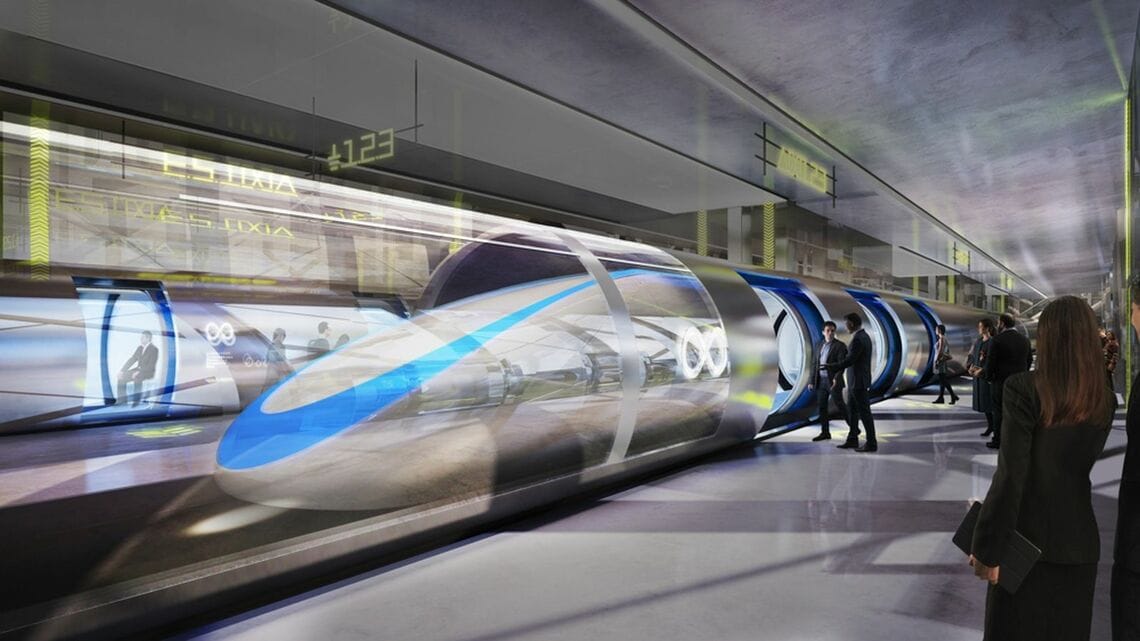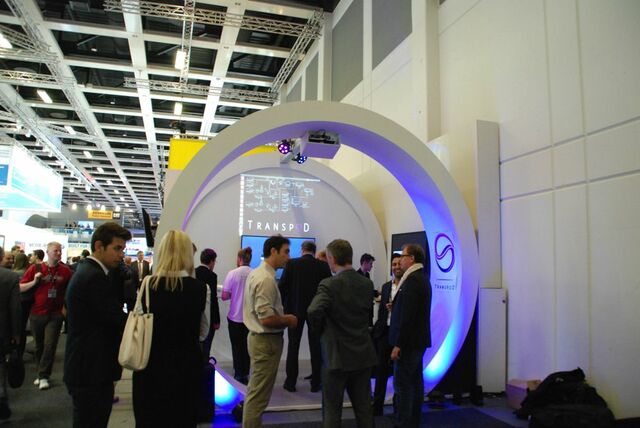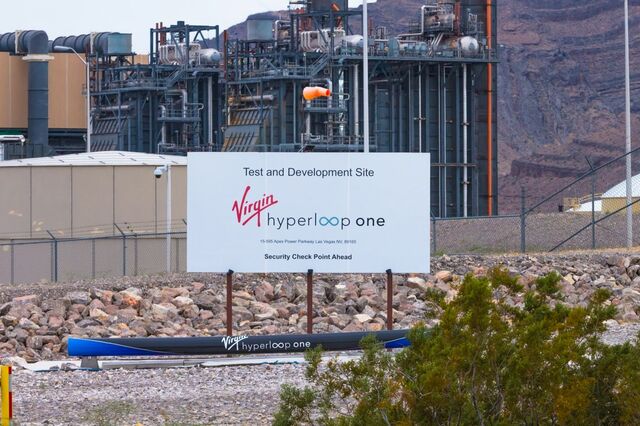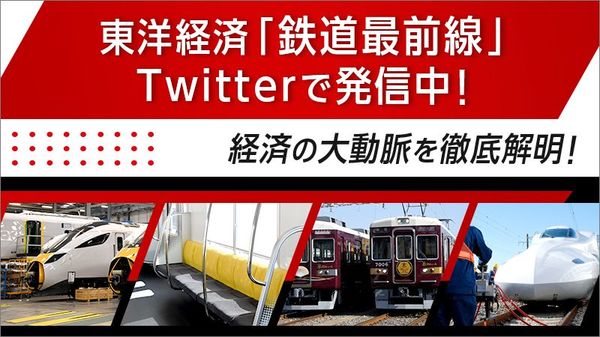https://toyokeizai.net/articles/amp/468413?display=b&_event=read-body
I shared it.
How much can we reduce the emissions of greenhouse gases such as carbon dioxide (CO2), which is a cause of global warming? In Europe, there is a lot of movement to shift from aircraft and automobiles to railways from the viewpoint of CO2 reduction, but there are also movements to find a way to new technology. One of them is "Hyperloop".
Hyperloop is a new transportation system in which vehicles called pods and capsules float in the air and move at high speed. By decompressing the inside of the tube to create a vacuum, frictional resistance and air resistance are suppressed, and it is possible to move at speeds exceeding 1000 km / h. Not only can it move as fast as a sonic passenger plane, but the vehicle itself does not emit CO2, so it is said to be environmentally friendly.
Various types of pods are under development, from small pods with a length of about 10 m that can seat several people to large pods with a length of 25 m that is the same as Shinkansen trains and can accommodate about 50 people. These pods are expected to be operated in various ways depending on demand, such as connecting multiple cars like a train or running a single pod like a gondola at a ski resort. There is also a plan to operate the most demanded section in a long train with a series of pods, and then divide it into short trains according to the destination.
Double the speed of the Linear Chuo Shinkansen
Currently, the linear motor car is considered to be the right-wing of the new high-speed transportation system following passenger planes and high-speed railways. The vehicle body is lifted from the track by using the repulsive force and attractive force of the magnetic force. In China, it has already been put into practical use as an airport access railway in Shanghai that operates at 300 km / h, and in Japan, JR Central is constructing the Linear Chuo Shinkansen that operates at 500 km / h. On the other hand, the speed of Hyperloop is over 1000km / h, which greatly exceeds the maximum speed of Superconducting Maglev.
However, Hyperloop also incorporates magnetic levitation technology, and it can be said that it is an evolution of the linear motor car. Since it can be realized with existing technology, it is expected that it will become a popular means of transportation like airplanes and bullet trains around 2030 (Nikkei Sangyo Shimbun, November 21, 2018). Be done.
The idea of a hyperloop that runs a high-speed vehicle in a vacuum tube has been around for a long time, but in 2013 Tesla and SpaceX's Elon Musk announced the idea of connecting Los Angeles and San Francisco in the United States with a hyperloop. It became a hot topic. Currently, many companies around the world are entering this business and competing in research and development.
The Virgin Group, led by Richard Branson, is at the top of the list. The company has expanded into all transportation fields such as aviation, railroads, shipping, and even space, and Hyperloop is an extension of that trend. Virgin Hyperloop, which conducts this project, conducted a manned test in November 2020 on a 500m-long experimental line constructed in the suburbs of Las Vegas. From October this year, a replica of a full-scale pod with a total length of 10 m has been exhibited at the venue of the Dubai Expo.
In addition to railway companies such as SNCF and Deutsche Bahn, manufacturers such as GE and consulting companies such as KPMG and McKinsey are listed as partners in Virgin's Hyperloop project. In addition, Dubai port operator DP World has invested, and a solid financial system will be put in place.
Hitachi also cooperates in terms of technology
Alongside Virgin, Hyperloop Transportation Technology (HTT) is named. In addition to having experimental equipment in Toulouse, France, it announced that it will conduct a demonstration experiment in inland China in 2018, and established a joint venture with the local government.
In December 2020, Hitachi named itself as an HTT partner, investing in HTT and at the same time providing technical cooperation. "We want to contribute to signal systems and vehicle control," said a Hitachi spokeswoman. However, while raising great expectations for the future of Hyperloop, he said, "I would like to utilize the knowledge gained through the technological development of Hyperloop for existing high-speed railways." He wants to get the fruits of his investment not only in the future but also closer to him. Siemens is also one of HTT's partner companies.
There are other operators working on Hyperloop technology development. Dutch startup Haad became a hot topic in October this year after successfully receiving € 15 million in funding from the EU. In August 2020, Canada's Transpod signed a basic agreement with the Government of Alberta on the development of Hyperloop in the state. The Korea Railroad Technology Research Institute has succeeded in traveling at speeds of over 1000 km / h with an experimental device made by reducing the size of Hyperloop to 1/17 in November 2020.
Then, even if the development of hyperloop supersonic driving can be cleared, what kind of problems are there for actual commercial operation? Not to mention the cost, there is too little information about the development of infrastructure such as tubes and stations.
So we talked to Arup, an engineering company that provides technical advice to Hyperloop developers, businesses interested in Hyperloop, and public institutions.
The company is known as a pioneer in the structural design of buildings, and is designing the structure for the construction of the Sydney Opera House and the Sagrada Familia in Spain. In the railway field, it is responsible for a wide range of tasks such as architectural design, interior design, and transportation planning for St Pancras Station, which is the departure and arrival station for Eurostar and the gateway to London's land.
"First of all, short distance is realistic"
Regarding Hyperloop, we have a track record of accepting feasibility studies for building Hyperloop test trucks from the Dutch government. Arup's name can also be found on the list of Virgin Hyperloop partners.
According to Arup, one of the concepts of Hyperloop is to balance "aircraft speed with the convenience of the metro." The speed of sound tends to attract attention, but it seems that the parties are as important as improving convenience as well as speed. In addition, "technical issues remain in terms of power in emergencies and heat management in the pod," and it is essential not only to pursue speed but also to improve safety technology.
The strength of Hyperloop is that it can travel long-distance sections that should normally be traveled by air in a short time, but laying tubes in such long-distance sections requires a large amount of construction costs. Therefore, "even if it is possible to travel long distances across continents in the future, it is realistic to start from a short distance."
At the moment, the most promising is the use for city movement and airport access. In that case, since the moving distance is not so long, a speed comparable to the speed of sound is not required. Therefore, while reducing the speed, it enhances the convenience so that you can ride easily. Arup is considering the possibility of a hyperloop system connecting three major airports in London, and says that by moving at high speed between the three airports, it can be used as if it were one airport.
What are the challenges regarding the development status? According to Arup, many operators are focusing on Hyperloop tubes and pods, but "at this point, each system is not compatible or interoperable at all." The pod levitation / propulsion method and the method of maintaining the vacuum inside the tube are different. "The operation concept has not been clarified, and this affects the scale and size of stations and access equipment to stations, the operation model of equipment and trains, the cost of the entire system, etc. It leads to inconsistency. "
Although it is a "dream technology" ...
Currently, the European Committee for Standardization (CEN) and the European Committee for Electrotechnical Standardization (CENELEC) are discussing the definition and standardization of hyperloop methodologies and frameworks in order to unify the standards. However, it seems that there is a drawback that it is difficult to proceed just because of the discussion within the current regulatory framework.
When asked if there was any problem with the laying of the tube, "It will be placed on the support structure above the ground, buried in the shallow underground, and laid in the deep tunnel structure. At the moment, the tube will be laid above the ground or underground. There are no technical issues regarding the installation of the tunnel. " However, considering that the construction of Linear, which should also have no technical problems, does not proceed as expected in the Southern Alps tunnel and the deep underground, it cannot be said that Hyperloop is free from these problems.
Many media and investors tout Hyperloop as a "dream technology," but when it comes to reality, it's not straightforward. There are many candidate routes around the world, but which section will be put to practical use first?















0 コメント:
コメントを投稿